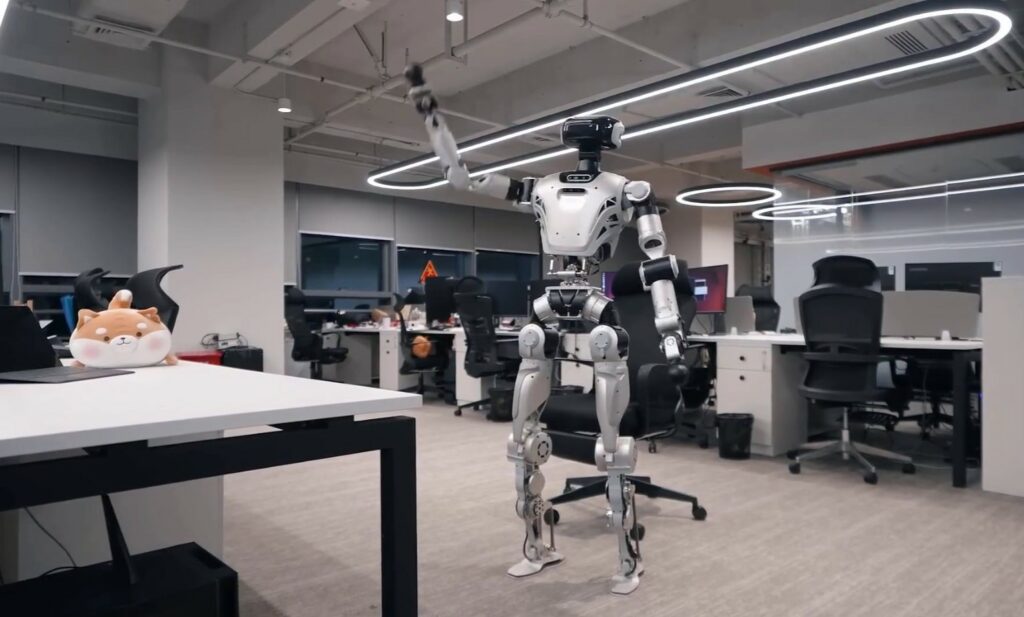
Redazione RHC : 15 November 2025 10:33
The 15th Chinese National Games opened with a spectacle that combined sport and technology. Among the highlights were robots capable of playing ancient bronze instruments, artificial intelligence systems capable of creating digital scrolls, and ultra-high-definition screens that captivated the audience.
Among the most applauded innovations is Walker S2 , the humanoid robot from UBTECH , representing the Guangdong-Hong Kong-Macao Greater Bay Area , which performed on a two-thousand-year-old bronze bell. The device, launched just three months ago, has already received orders for hundreds of millions of units.
In parallel with the Games, the Ta Kung Pao newspaper launched the in-depth series ” Direct Hit on Shenzhen’s Intelligent Manufacturing.” The project focuses on three key areas of Chinese innovation: robotics, intelligent manufacturing, and advanced electronics. The aim is to explain how Shenzhen is developing an advanced manufacturing ecosystem and why the Greater Bay Area is considered a strategic hub in the new era of intelligent manufacturing.
Looking back, forty-five years ago, when the Shenzhen Special Economic Zone was just starting out , factories were filled with the clatter of traditional machinery. Today, many production lines operate in near silence, thanks to the introduction of robots with pinpoint-precision tactile sensors and increasingly human-like movements.
Among the most surprising are the robotic hand from Pacinia Labs , capable of distinguishing different fabrics such as silk, cotton or jacquard, the “Robot Eye” from RoboSense which predicts the trajectory of small moving objects, and the humanoid CL-3 from Zhuji Dynamics, equipped with 31 degrees of freedom and capable of moving on stairs and uneven surfaces.

These advances are transforming robots, integrating perception, decision-making, and action into a single cycle. They are no longer machines performing rigid tasks, but systems capable of adapting to their surroundings and reacting autonomously.
In RoboSense Technology ‘s lab, a robotic arm equipped with the AC1 sensor analyzes the shape, depth, and motion of objects such as balls and blocks in real time. In a demonstration, the robot predicted the roll of a ball and caught it before it hit the ground. The same technology has been implemented on the Qinglong Pro robot, presented at the 2025 World Artificial Intelligence Conference in China , to improve capabilities such as spatial mapping and obstacle avoidance.
Pacinia Sensing Technology also demonstrated advances in artificial touch. The robotic hand, equipped with multidimensional sensors, distinguishes different materials by simply touching them. Thanks to proprietary algorithms and a rich tactile database, the robot recognizes cotton, silk, stretch satin, and jacquard fabrics. According to Chief Operating Officer Nie Xiangru, this technology could also be used in surgical robots in the future, for precision operations in conditions of limited visibility.
Zhuji Dynamics has focused on mobility. The CL-3 humanoid robot , unveiled in May, has 31 degrees of freedom in its torso and limbs. Thanks to full-body motion control algorithms, it can walk, run, jump, and climb stairs with great stability. In automotive tests, the CL-3 completed complex tasks such as tightening torque wrenches and positioning components with an accuracy of ±0.1 millimeter.
Experts believe this step marks the transition of humanoid robots from laboratories to production lines, ushering in a new phase of flexible automation.
Zhang Wei, founder of Zhuji Power, emphasizes that the evolution of humanoid robots is no longer just about imitating human functions: the goal is to develop “motor intelligence” that allows them to collaborate more effectively with human operators, both in factories and in smart cities.
The growth of robotics in Shenzhen is supported by collaboration between universities, research centers, and industry. China’s first “Body-Integrated Intelligent Robot Demonstration Block ” is under construction in the Bantian Subdistrict of Longgang District. The area will integrate robotic theaters, experimental laboratories, and industrial parks to accelerate technology transfer. The world’s first“6S robot store” has also opened in the same area, a platform designed to bring citizens and businesses closer to robots. Director Lin Feng explained that the store is designed to offer products, services, and live demonstrations, thus bridging the “last mile” for marketing.
The “Action Plan for High-Quality Development of Shenzhen’s Robotics Industry,” released in 2024, sets the goal of establishing a world-class robotics innovation center by 2027 and developing at least five companies with revenues exceeding 10 billion yuan. Currently, there are over 1,500 companies in the sector, and the total value of the industry is expected to exceed 200 billion yuan by 2025.
 Redazione
Redazione